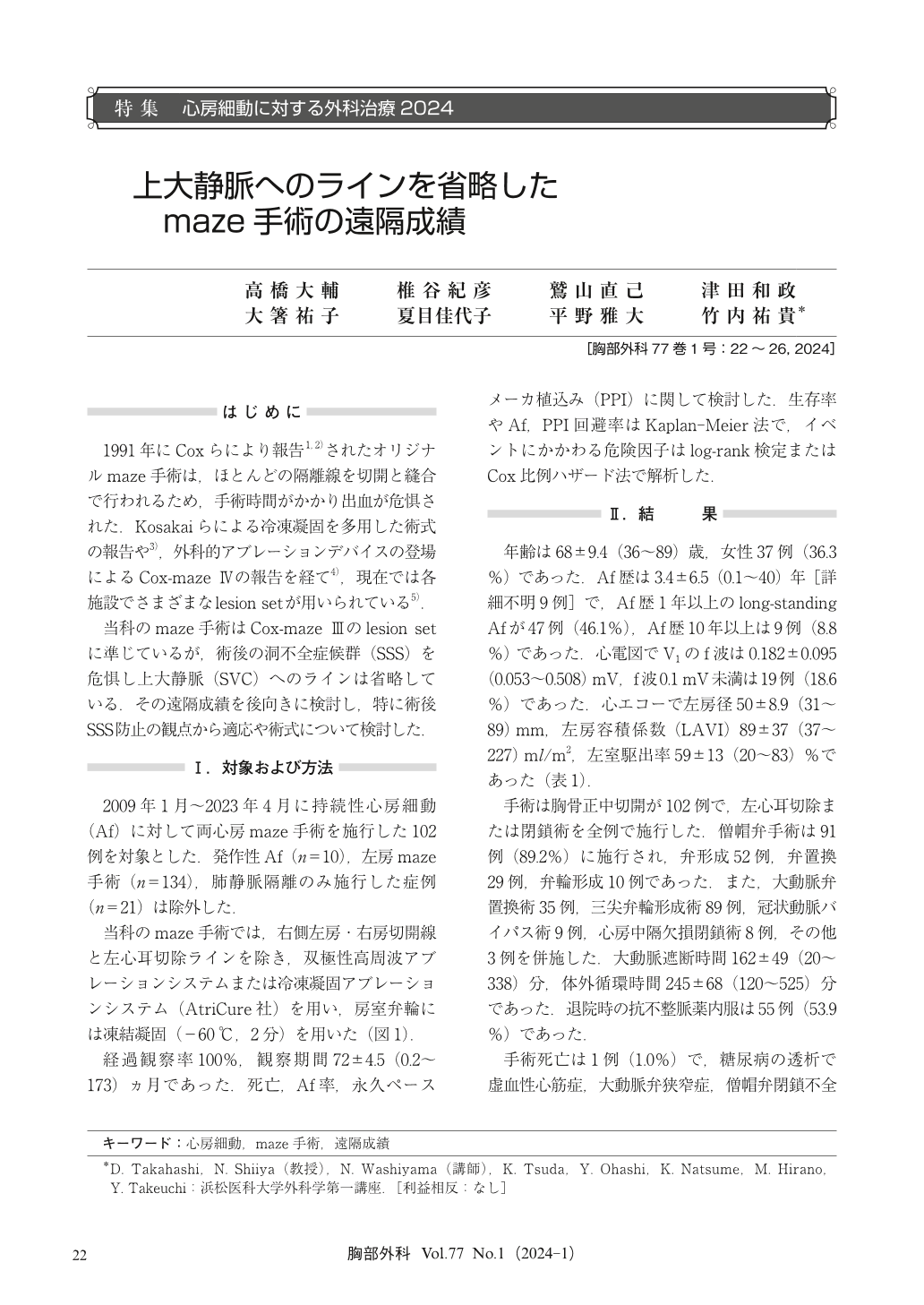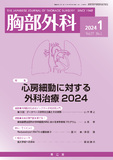Japanese
English
- 有料閲覧
- Abstract 文献概要
- 1ページ目 Look Inside
- 参考文献 Reference
1991年にCoxらにより報告1,2)されたオリジナルmaze手術は,ほとんどの隔離線を切開と縫合で行われるため,手術時間がかかり出血が危惧された.Kosakaiらによる冷凍凝固を多用した術式の報告や3),外科的アブレーションデバイスの登場によるCox-maze Ⅳの報告を経て4),現在では各施設でさまざまなlesion setが用いられている5).
Objective:In an effort to avoid postoperative sick sinus syndrome (SSS), we omit the ablation line to the superior vena cava (SVC) in the Cox-mazeⅢ lesion set. We report the long-term outcomes, including the freedom from SSS.
Methods:We studied 102 patients who underwent bi-atrial maze procedure for persistent atrial fibrillation (Af) from 2009 through 2023. Bipolar radio frequency ablation or cryoablation was used except for right-side atriotomy and right atriotomy. Cryoablation was used for atrioventricular annulus. The patient age was 68±9.4. Duration of Af was 3.4±6.5 years (unknown 9 cases). The amplitude of f-wave in V1 was 0.182±0.095 mV and it was<0.1 mV in 19 (18.6%). Diameter of the left atrium was 50±8.9 mm, and left atrial volume index was 89±37 ml/m2. Ninety-one (89.2%) patients underwent concomitant mitral valve surgery.
Results:Survival rate was 99% at 1 year and 96% at 5 years. Freedom from Af was 92% at 1 year and 88% at 5 years. Freedom from permanent pacemaker implantation (PPI) was 87% at 1 year and 83% at 5 years.
Conclusions:Defibrillation rate and the incidence of PPI was comparable to those in previous reports after standard Cox-mazeⅢ. SSS after maze for persistent Af seem due to patient.

© Nankodo Co., Ltd., 2024


